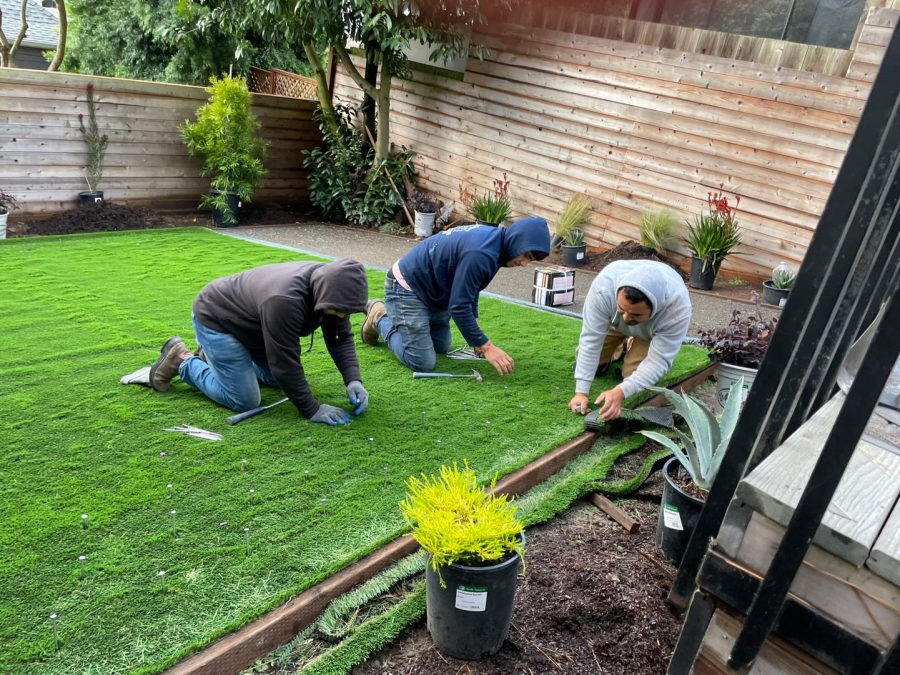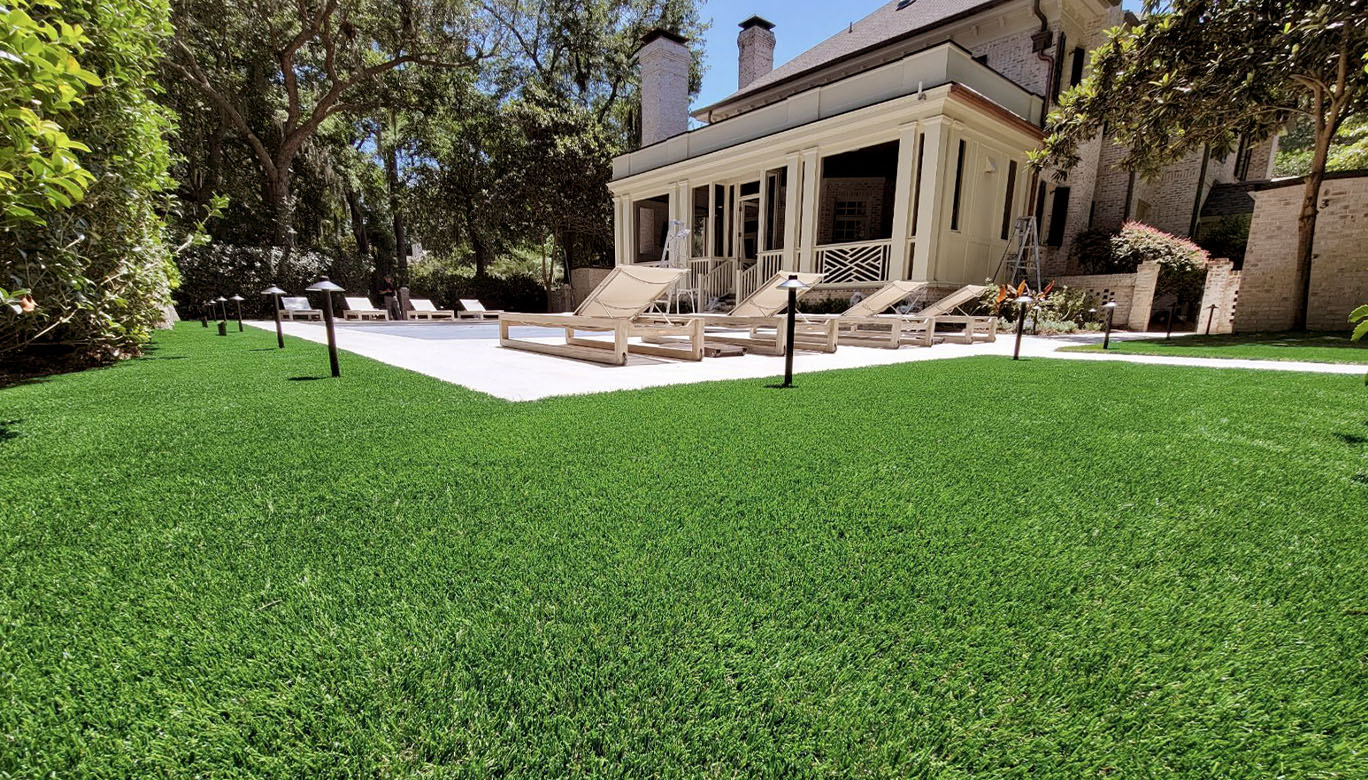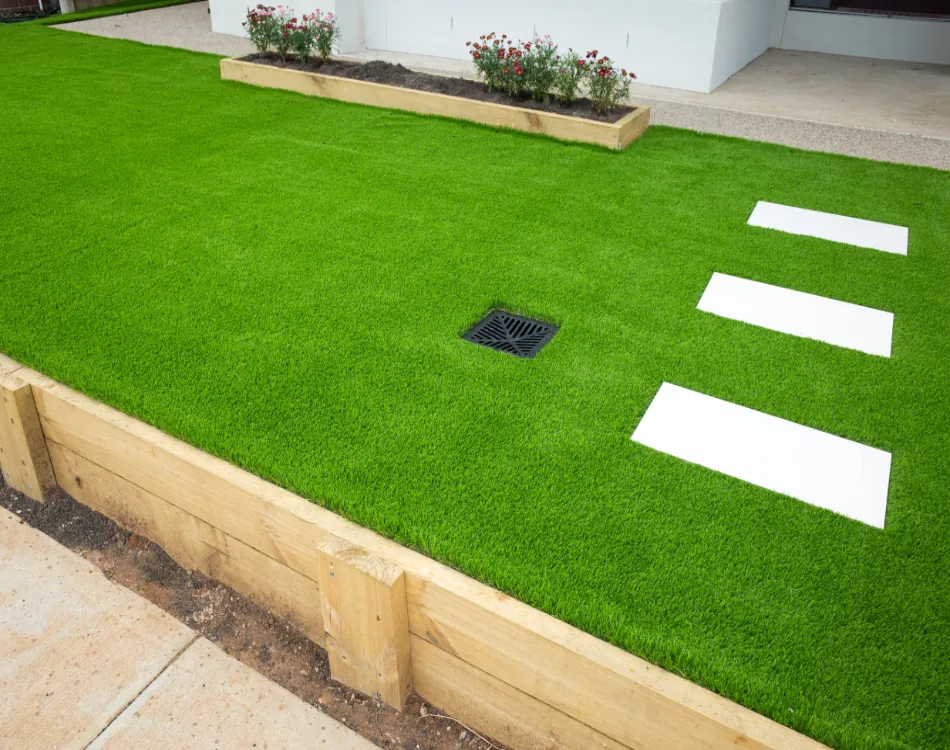Well-Known Artificial Turf Companies Phoenix for a Beautiful and Green Lawn
Well-Known Artificial Turf Companies Phoenix for a Beautiful and Green Lawn
Blog Article
Look Into the Environmental Advantages of Opting for Artificial Grass Solutions
The adoption of synthetic grass services offers an engaging possibility to resolve pushing environmental obstacles. By significantly minimizing water use and reducing the application of hazardous chemicals, these alternatives not just advertise sustainable landscape design however also secure regional communities. In addition, the reduced carbon impact connected with lowered maintenance tasks contributes to a more lasting strategy to land monitoring. The implications of these benefits prolong beyond simple conservation efforts, increasing inquiries concerning their long-term influence on environment conservation and overall ecological balance. Discovering these measurements exposes an intricate interplay worth considering.
Water Preservation Conveniences
Among the most substantial benefits of synthetic grass is its capacity to conserve water. Typical lawn lawns call for considerable irrigation, particularly in areas vulnerable to dry spell or water restrictions. In contrast, artificial lawn does not require watering, considerably minimizing the overall demand for water sources. This feature is specifically valuable in deserts where water deficiency is a pushing problem.
By getting rid of the demand for regular watering, synthetic turf adds to sustainable landscape techniques and helps reduce the environmental impact of extreme water consumption. The conservation of water prolongs to the reduction of runoff, which can lead to soil erosion and river contamination.
In addition, the installation of man-made lawn permits house owners and municipalities to designate water sources extra effectively, concentrating on necessary usages such as alcohol consumption water and farming. The change towards man-made turf not only promotes liable water use however additionally lines up with wider ecological objectives focused on protecting natural deposits.
As neighborhoods progressively prioritize sustainability, the water conservation advantages of synthetic turf provide a compelling instance for its adoption in industrial and domestic landscape design jobs.
Lowered Chemical Usage
The change to fabricated lawn considerably decreases the dependence on chemical treatments commonly made use of in all-natural yard upkeep. Traditional grass monitoring commonly entails the application of plant foods, chemicals, and herbicides to promote development and control insects. These chemicals can pose risks to human health and wellness, regional wild animals, and the setting, adding to soil and water contamination.
On the other hand, man-made turf removes the need for these hazardous substances. As soon as installed, it needs marginal upkeep, largely including normal cleansing and irregular infill replenishment. This reduction in chemical use not only benefits the instant setting however additionally adds to more comprehensive eco-friendly security. By decreasing the launch of synthetic substances into the ecological community, artificial turf promotes much healthier dirt and water supply.
Furthermore, the absence of chemical overflow connected with synthetic grass installments helps secure local rivers from contamination, sustaining water life and maintaining biodiversity. Arizona artificial turf. As areas progressively prioritize sustainable practices, deciding for artificial turf offers a practical solution that aligns with environmental conservation goals. Through this change, residential property owners can delight in lavish environment-friendly spaces without compromising environmental wellness, leading the way for an extra sustainable future
Lower Carbon Footprint

Moreover, the installation of man-made lawn can cause substantial water conservation. Natural grass call for significant amounts of water for irrigation, which not only contributes to the carbon impact related to water removal and therapy yet also stress local additional hints water resources. In contrast, man-made turf read the article needs marginal upkeep, requiring no watering, therefore considerably minimizing water use and its linked energy prices.
In addition, the long life of synthetic turf adds to its decreased carbon influence. With a life-span of up to 15 years or even more, the demand for frequent substitutes is lessened, causing less waste and lower power consumption in production and dealing with traditional turf alternatives. On the whole, synthetic grass presents a sustainable choice for ecologically aware landscaping.
Habitat Preservation
Habitat preservation is a critical factor to consider in the discussion over landscaping selections, particularly when contrasting synthetic grass to all-natural grass. All-natural turf yards commonly need extensive maintenance, including the use of herbicides, chemicals, and fertilizers, which can negatively influence local environments. These chemicals can leach right into the soil and rivers, damaging indigenous flora and animals and interfering with regional environments.
In comparison, synthetic grass offers an opportunity to reduce the environmental impact of landscape design. By selecting artificial grass, home owners can lessen the disruption of natural environments linked with typical lawn care methods. Synthetic turf gets rid of the demand for damaging chemicals, thus securing close-by wild animals and preserving the honesty of surrounding environments. Furthermore, the setup of man-made grass can bring about the conversion of previous grass areas right into more biodiverse landscapes, such as pollinator yards or native plant locations, which can support local wildlife.
Inevitably, the shift to artificial turf not just preserves water and reduces maintenance efforts yet additionally promotes an extra harmonious relationship in between human tasks and the natural surroundings, promoting habitat preservation while doing so.
Long-Term Sustainability
Long-term sustainability is an important consider assessing the benefits of synthetic grass over conventional yard lawns. One of the most substantial advantages of man-made lawn is its durability; it can last approximately 15-20 years with marginal maintenance, whereas all-natural yard calls for frequent reseeding and replacement. This longevity view publisher site decreases the need for consistent sources, such as water, plant foods, and pesticides, which are vital for keeping a healthy turf lawn.
Additionally, fabricated grass contributes to a decrease in carbon emissions associated with yard treatment tools. Standard grass often require gas-powered lawn mowers, trimmers, and blowers, all of which add to air pollution. Arizona turf. On the other hand, synthetic grass removes the requirement for such tools, promoting a cleaner setting
Furthermore, the manufacturing of synthetic turf progressively makes use of recycled materials, boosting its sustainability profile. As makers take on green practices, the ecological footprint of synthetic grass remains to decrease.

Verdict
The adoption of synthetic grass solutions provides significant ecological advantages, consisting of considerable water conservation, reduced dependence on dangerous chemicals, and a lower carbon impact. Furthermore, synthetic grass aids in preserving natural habitats by lessening land disturbance and advertising long-term sustainability with using long lasting products. Jointly, these elements emphasize the possibility of synthetic grass to contribute favorably to environmental health and wellness and supply a feasible option to standard landscape design practices in an increasingly resource-conscious globe.
In comparison, fabricated lawn does not require watering, substantially minimizing the total need for water resources. By lessening the release of artificial substances right into the community, man-made lawn promotes much healthier dirt and water systems.
In addition, the installation of synthetic turf can result in considerable water conservation. In comparison, artificial turf needs very little maintenance, requiring no watering, consequently dramatically lowering water use and its linked energy expenses.

Report this page